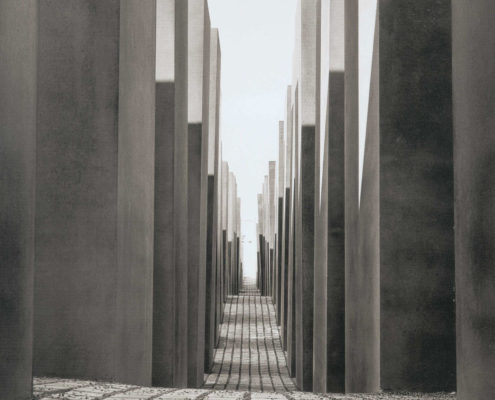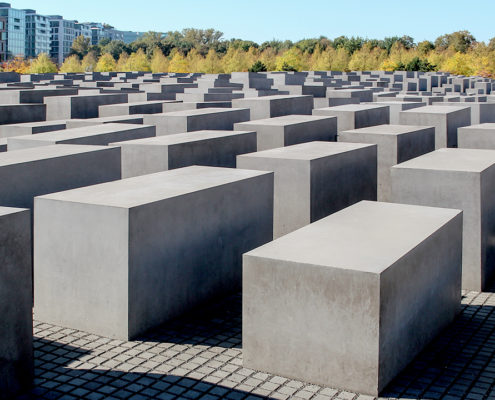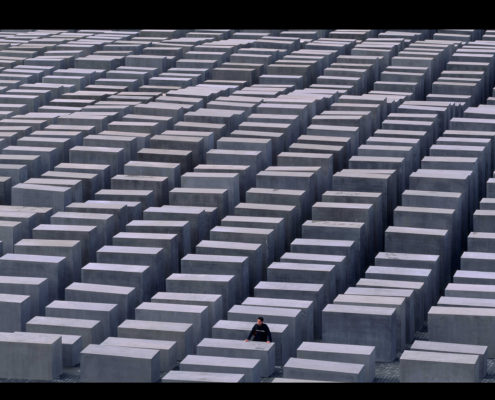Architect Peter Eisenman stirred controversy when he unveiled plans for the Memorial to the Murdered Jews of Europe. The Memorial is made up of 2,711 massive rectangular stone slabs (stelae) on a sloping stretch of land. The site lies between East and West Berlin, within sight of the Reichstag Dome (top left in this photo) designed by architect Norman Foster.
Critics protested that the Memorial was too abstract and did not present historical information about the Nazi campaign against the Jews. Other people said that the Memorial resembled a vast field of nameless tombstones and captured the horror of the Nazi death camps.
The use of the stele is an ancient architectural tool to honor the dead. The stone marker, to a smaller extent, is used even today.
Peter Eisenman's Holocaust Memorial is constructed of massive stone blocks arranged on a 19,000 square meter (204,440 square foot) plot of land between East and West Berlin. Each stele or stone slab is sized and arranged in such a way that the field of stelae seems to undulate with the sloping land.
Architect Peter Eisenman designed the Berlin Holocaust Memorial without plaques, inscriptions, or religious symbols. The Memorial to the Murdered Jews of Europe is without names, yet the strength of the design is in its mass of anonymity. The solid rectangular stones have been compared to tombstones and coffins.
This memorial is unlike American memorials such as the Vietnam Veterans Wall in Washington, DC or the National 9/11 Memorial in New York City, which incorporate victims' names within their design.
Visitors to the Memorial to the Murdered Jews of Europe can follow a labyrinth of pathways between the massive stone slabs. Architect Peter Eisenman explained that he wanted visitors to feel the loss and disorientation that Jews felt during the Holocaust.
Each stone slab at the Memorial to the Murdered Jews of Europe is a unique shape and size, put in place by the architect's design. In so doing, architect Peter Eisenman points out the uniqueness and the sameness of the people who were murdered.
After the slabs were in place, the cobblestone pathways were added.
The stone slabs at the Berlin Holocaust Memorial have been coated with a special solution to prevent graffiti. Authorities hope that this will prevent neo-Nazi and anti-semitic vandalism.
"I was against the graffiti coating from the start," architect Peter Eisenman told Spiegel Online. "If a swastika is painted on it, it is a reflection of how people feel....What can I say? It's not a sacred place."
Critics of the Memorial to the Murdered Jews of Europe say that the stones are too abstract and philosophical. Because they lack an immediate connection with common people, the Memorial's intellectual intent may be lost, resulting in a disconnect. Would people ever treat the slabs as objects in a playground?
People who praise the Berlin Holocaust Memorial say that the stones will become a central part of Berlin's identity.
Information provided in part by: ThoughtCo.







